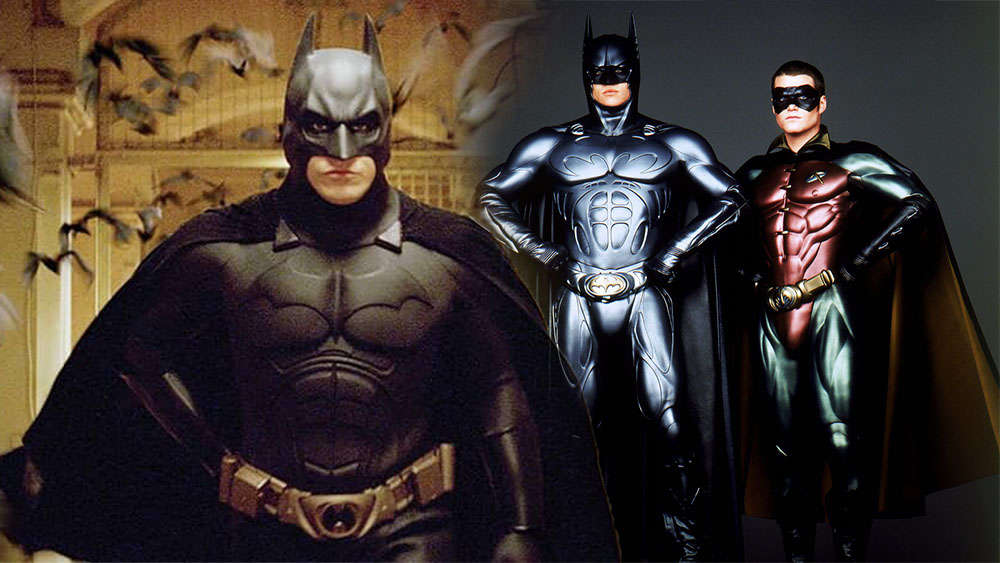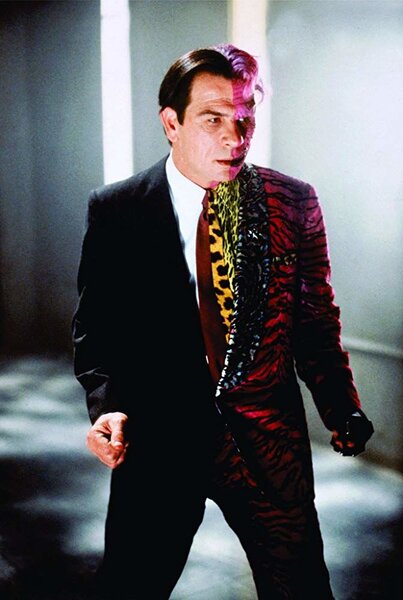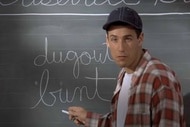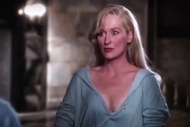Create a free profile to get unlimited access to exclusive videos, sweepstakes, and more!
Batman Forever and Batman Begins: A tale of two Dark Knights

There are, in the grand scheme of Movies About Batman, two chapters: Before Nolan and After Nolan. Not every film in the latter phase is directed by Christopher Nolan but every incarnation of onscreen Batman exists in the shadow of what he did with the character, for better or worse. The story of Christopher Nolan and Bruce Wayne is practically lore itself at this point: After nearly a decade of struggles to reinvent the character after the box office and critical failure of Joel Schumacher's 1997 effort, Batman & Robin, Nolan brought Batman back to the cinematic masses with 2005's darker, more grounded Batman Begins. The film paved the way for The Dark Knight, one of the great masterpieces of superhero and blockbuster cinema, and made such an imprint on the public's perception of what a Batman movie could be that no film since has dared to stray from the tonal blueprint it drew.
It is, at a glance, the polar opposite of what Schumacher brought to the table when he signed on for 1995's Batman Forever. Schumacher maximalized the hyper-stylized Art Deco vibes director Tim Burton had brought to his first two Bat-films, cranking up the saturation and adding a chaotic and homoerotic (Schumacher, a legendary queer director, knew exactly what he was doing with those Bat-Nipples) energy to the production. It's camp theater starring the Dark Knight and the Boy Wonder.
Nolan, on the other hand, approached Batman with an ostensible hyperrealism that had yet to be seen in the character's film adaptations. His origin story for Bruce functioned as a deep and nonlinear character study, delving into the psyche of trauma from which the Batman was born and examining a Gotham overrun not with supervillains but corruption, its epidemic of crime the design of the rich and powerful who ran the city from the shadows as much as the light.
These two films celebrate their respective anniversaries a mere 24 hours apart from one another — Begins on June 15 and Forever on June 16 — a seeming tribute to the wealth of possibilities that come with telling a Batman story. But are they all that different? Did Nolan really reinvent the wheel when he directed Begins, effectively ending the era of the camp superhero, or did he draw more from Schumacher's vision than he may have known? At their core, Batman Forever and Batman Begins have far more in common than you might realize.
It would seem the starkest difference in the films comes down to aesthetics. Forever is a neon-drenched acid trip while Begins aims to resemble the world its viewers inhabit — "aims" being the key word. While its successor genuinely succeeds at creating what feels like a real-world superhero film, Begins is a stylized brand of realism that veers so hard in the opposite direction of the trappings of Forever that it lands in a wholly unrealistic territory itself.
Begins is one of the more aggressively brown films you're ever going to come across. The clothes, the streetlights, the sets, the color grading — everything is brown to the point of parody. It's always raining in Gotham (the rain isn't literally brown but it sure does feel brown). Everything is damp, everything is wilted. Let's not pretend it's any less removed from reality than Schumacher's Universal Studios Boardwalk version of Gotham.
Famously, Jim Carrey's performance as The Riddler in Forever was so over-the-top that it caused his co-star Tommy Lee Jones (Two-Face) to inform him that he, "[could] not sanction your buffoonery." A rich line coming from a guy whose Two-Face is half purple and exclusively delivers his lines via screams and cackles. Forever's villains are as campy as the world they inhabit, a seemingly far cry from Begins' mobsters, Scarecrow, and... army of ninjas?
Yeah, let's start with the ninjas. Christopher Nolan's supposedly hyper-realistic vigilante drama prominently features a ninja army in both the opening act and final set piece. His interpretation of the Scarecrow, as played by Cillian Murphy, may start out as an unnervingly calm criminal psychiatrist, but by the time he's transformed into his supervillain alter ego he's as camp as they come. And those mobsters? They're led by Tom Wilkinson, whose Carmine Falcone is so on-the-nose-American-gangster he might as well be doing an Al Capone impression. None of this is to say that these performances are bad or that the movie shouldn't feature ninjas (all movies should feature ninjas). It's simply to say that they're far less removed from the more flamboyant camp of Forever.
And then there's the Batman of it all. Schumacher's Batman & Robin admittedly delves little into the psyche of the Caped Crusader, but the ways in which Batman Forever does are actually shockingly similar to that of Begins. It's probably fair to say that Begins explores Bruce's trauma and the genesis of Batman with more nuance but Forever is just as, if not more explicitly focused on the subject.
It gets lost under all the Carrey riffing and Two-Face screaming but Batman Forever's primary narrative, especially for the first half of the movie before Dick Grayson's introduction, involves Batman and Bruce separately meeting the profoundly horny-for-Batman therapist Dr. Chase Meridian (Nicole Kidman) and falling in love with her as she begins to psychoanalyze Bruce's trauma after the loss of his parents. It isn't handled with much subtlety but Bruce's arc over the course of the film largely relates to how the death of his parent affected him as a child, specifically in relation to repressed memories involving a fall into a cave of bats that will look familiar to anyone who's seen the first three minutes of Batman Begins.
Maybe all of this seems like a stretch. One of the beauties of Batman as a character is the multitude of interpretations he's been open to since the character was first created. There's no "right" version and many seem as different from one another as they possibly could (it's hard to believe Frank Miller's Year One Batman is the same character who fought para-dimensional aliens in the Silver Age but alas: same guy). As we look back on two pivotal films in the Dark Knight's cinematic journey on their respective anniversaries, their differences are vast and obvious. But they share the same DNA. It would seem that while you can mold the world of Batman like clay, creating any shape of story you want to see him inhabit, a story featuring an army of ninjas can only be so realistic.















